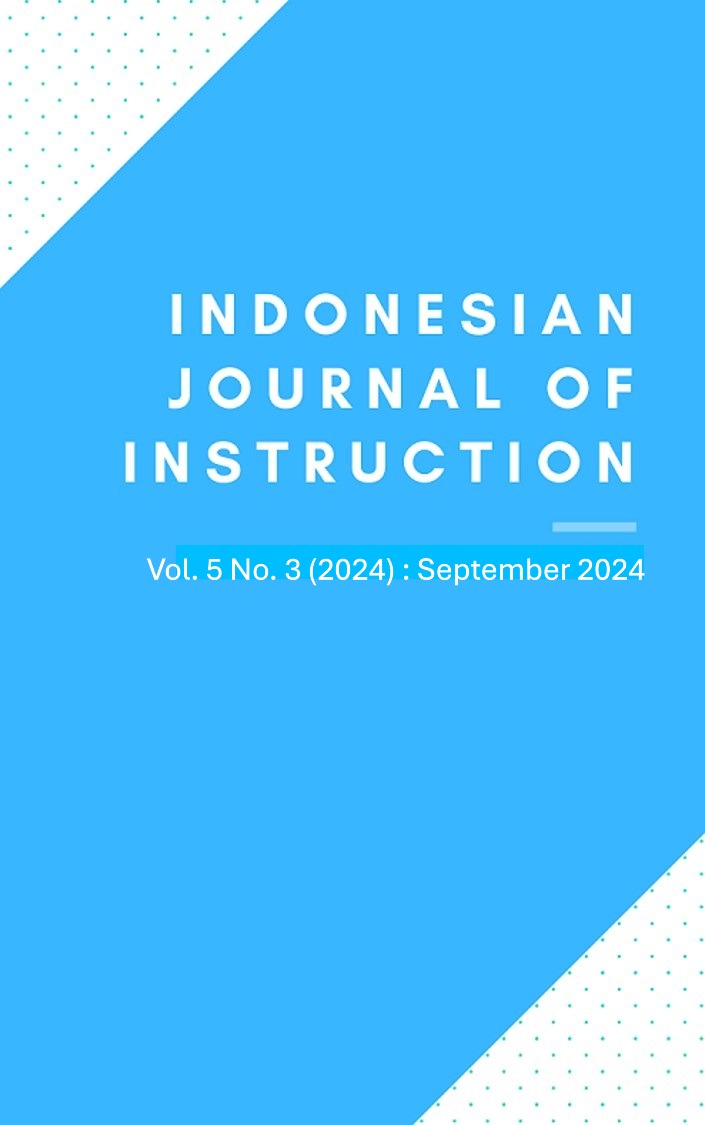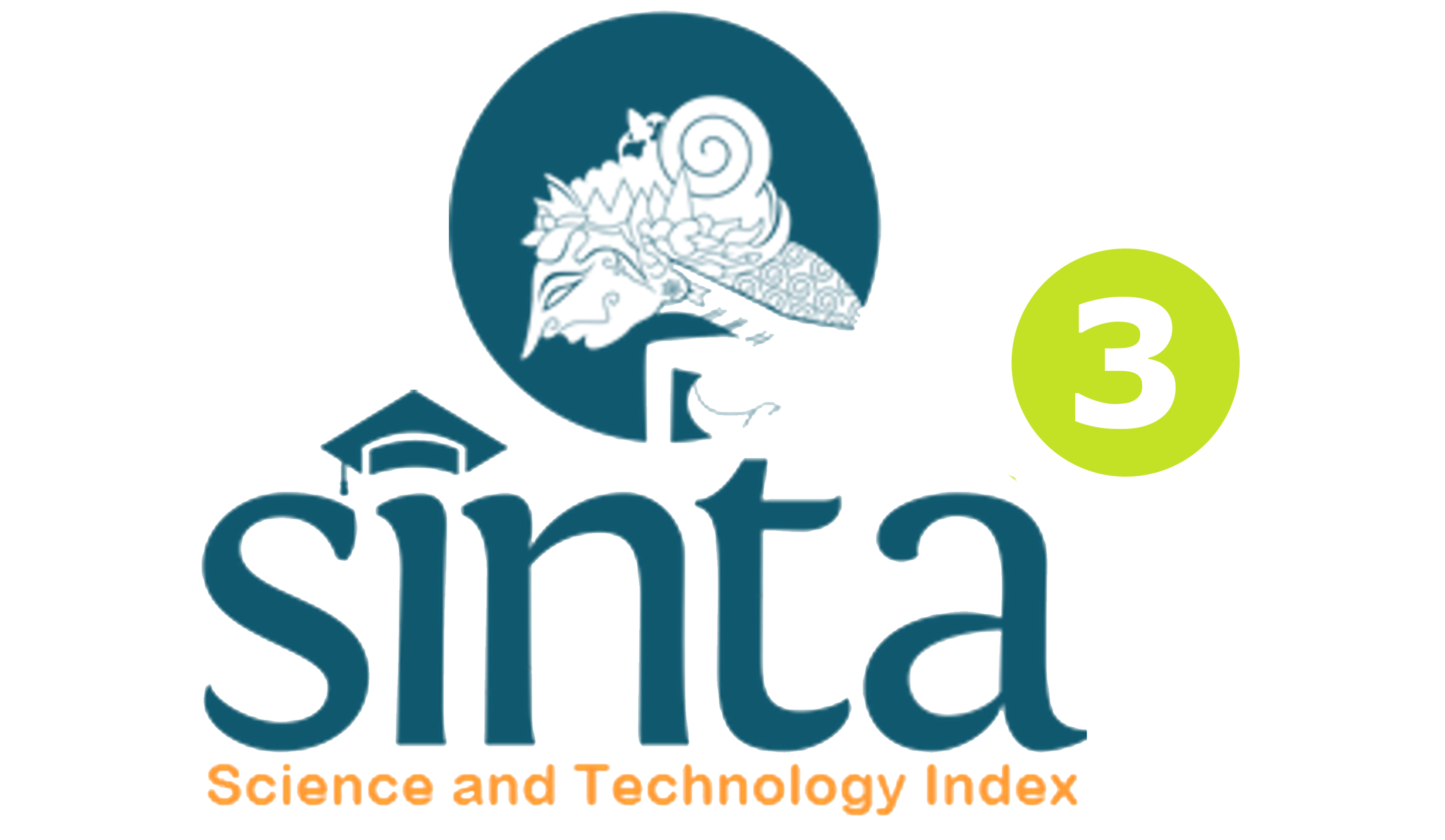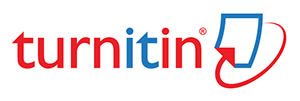The Impact of Indoor and Outdoor Experiential Learning on Academic Achievement in Primary School
DOI:
https://doi.org/10.23887/iji.v5i3.85532Keywords:
Indoor Experiential, Outdoor Experiential, Academic Achievement, Primary SchoolAbstract
The low standard deviation in science scores suggests a considerable number of students with below-average performance, highlighting the need for more effective teaching strategies. This situation calls for a re-evaluation of the methods used in science education. This study aims to evaluate the impact of experiential learning approaches (indoor and outdoor) on the academic achievement of elementary school students, especially on the science learning outcomes of fifth grade students. The method used is quantitative with an experimental design, where two control groups are compared: class VA using outdoor learning and class VB using indoor learning. This study involved a pre-test and a post-test to measure the development of students' science learning outcomes after the learning intervention. The results showed a significant correlation between experiential learning strategies and academic achievement. The data indicated that both male and female students showed better grades when learning using the outdoor approach compared to indoor. In conclusion, although there was no interaction effect between learning strategies and gender, there was a significant difference in academic achievement between students who participated in outdoor learning and those who participated in indoor learning. Outdoor learning has been shown to be more effective in improving science learning outcomes than indoor learning.
References
Adas, D., & Bakir, A. (2013). Writing Difficulties and New Solutions : Blended Learning as an Approach to Improve Writing Abilities PhD in teaching English Language Methods, AL-Quds Open University,. International Journal of Humanities and Social Science, 3(9), 254–266.
Aderibigbe, S. A. (2021). Can online discussions facilitate deep learning for students in General Education? Heliyon, 7(3). https://www.cell.com/heliyon/fulltext/S2405-8440(21)00519-3. DOI: https://doi.org/10.1016/j.heliyon.2021.e06414
Aithal, A., & Aithal, P. S. (2020). Development and validation of survey questionnaire & experimental data–a systematical review-based statistical approach. International Journal of Management, Technology, and Social Sciences (IJMTS), 5(2), 233–251. https://papers.ssrn.com/sol3/papers.cfm?abstract_id=3724105. DOI: https://doi.org/10.47992/IJMTS.2581.6012.0116
Alberola-Mulet, I., Iglesias-Martínez, M. J., & Lozano-Cabezas, I. (2021). Teachers’ beliefs about the role of digital educational resources in educational practice: A qualitative study. Education Sciences, 11(5), 239. https://www.mdpi.com/2227-7102/11/5/239. DOI: https://doi.org/10.3390/educsci11050239
Alisha, F., Safitri, N., & Santoso, I. (2019). Students’ Difficulties in Writing EFL. Professional Journal of English Education, 2(1964), 20–25.
http://download.garuda.kemdikbud.go.id/article.php?article=1090119&val=16394&title=FINDING DIFFICULTIES IN WRITING EFL.
Arık, S., & Yılmaz, M. (2020). The effect of constructivist learning approach and active learning on environmental education: A meta-analysis study. International Electronic Journal of Environmental Education, 10(1), 44–84.
https://dergipark.org.tr/en/pub/iejeegreen/issue/49969/605746.
Arslan, A. (2020). Reliability and Validity of Instruments Measuring English Teachers’ TPACK. International Journal of Assessment Tools in Education, 7(3), 343–360. https://dergipark.org.tr/en/doi/10.21449/ijate.679876. DOI: https://doi.org/10.21449/ijate.679876
Awofala, A. O. A., & Blessing, A. E. (2014). Assessing adult learner’s numeracy as related to gender and performance in arithmetic. Journal of New Approaches in Educational Research, 3(2), 83–92. https://doi.org/10.7821/naer.3.2.83-92. DOI: https://doi.org/10.7821/naer.3.2.83-92
Battal, C., Occelli, V., Bertonati, G., Falagiarda, F., & Collignon, O. (2020). General Enhancement of Spatial Hearing in Congenitally Blind People. Psychological Science, 31(9), 1129–1139. https://doi.org/10.1177/0956797620935584. DOI: https://doi.org/10.1177/0956797620935584
Beneroso, D., & Robinson, J. (2022). Online project-based learning in engineering design: Supporting the acquisition of design skills. Education for Chemical Engineers, 38(October 2021), 38–47. https://doi.org/10.1016/j.ece.2021.09.002. DOI: https://doi.org/10.1016/j.ece.2021.09.002
Bond, M. (2020). Facilitating student engagement through the flipped learning approach in K-12: A systematic review. Computers & Education, 151, 103819. https://www.sciencedirect.com/science/article/pii/S036013152030021X. DOI: https://doi.org/10.1016/j.compedu.2020.103819
Brandt, J.-O., Barth, M., Merritt, E., & Hale, A. (2021). A matter of connection: The 4 Cs of learning in pre-service teacher education for sustainability. Journal of Cleaner Production, 279, 123749. DOI: https://doi.org/10.1016/j.jclepro.2020.123749
https://www.sciencedirect.com/science/article/pii/S095965262033794X.
Cole, J., & Feng, J. (2015). Effective strategies for improving writing skills of elementary English language learners. Chinese American Educational Research and Development Association Annual Conference, 1–25. https://eric.ed.gov/?id=ED556123.
El-Sabagh, H. A. (2021). Adaptive e-learning environment based on learning styles and its impact on development students’ engagement. International Journal of Educational Technology in Higher Education, 18(1). https://doi.org/10.1186/s41239-021-00289-4. DOI: https://doi.org/10.1186/s41239-021-00289-4
Ennis, R. H. (2011). The Nature of Critical Thinking: An Outline of Critikal Thinking Dispositions and Abilities. University of Illinois.
Eroğlu, S., & Bektaş, O. (2022). The effect of 5E-based STEM education on academic achievement, scientific creativity, and views on the nature of science. Learning and Individual Differences, 98, 102181. DOI: https://doi.org/10.1016/j.lindif.2022.102181
https://www.sciencedirect.com/science/article/pii/S1041608022000681.
Flores, M. A. (2020). Feeling like a student but thinking like a teacher: A study of the development of professional identity in initial teacher education. Journal of Education for Teaching, 46(2), 145–158. DOI: https://doi.org/10.1080/02607476.2020.1724659
https://www.tandfonline.com/doi/abs/10.1080/02607476.2020.1724659.
Fromm, J., Radianti, J., Wehking, C., Stieglitz, S., & Majchrzak, T. A. (2021). More than experience ? - On the unique opportunities of virtual reality to afford a holistic experiential learning cycle. The Internet and Higher Education, 50(March), 100804.1-14. https://doi.org/10.1016/j.iheduc.2021.100804. DOI: https://doi.org/10.1016/j.iheduc.2021.100804
Garzón, J., Baldiris, S., Gutiérrez, J., & Pavón, J. (2020). How do pedagogical approaches affect the impact of augmented reality on education? A meta-analysis and research synthesis. Educational Research Review, 31, 100334. DOI: https://doi.org/10.1016/j.edurev.2020.100334
https://www.sciencedirect.com/science/article/pii/S1747938X19303525.
Ghasemy, M., Teeroovengadum, V., Becker, J.-M., & Ringle, C. M. (2020). This fast car can move faster: A review of PLS-SEM application in higher education research. Higher Education, 80(6), 1121–1152. https://link.springer.com/article/10.1007/s10734-020-00534-1. DOI: https://doi.org/10.1007/s10734-020-00534-1
Giofrè, D., Allen, K., Toffalini, E., & Caviola, S. (2022). The impasse on gender differences in intelligence: A meta-analysis on WISC batteries. Educational Psychology Review, 34(4), 2543–2568. https://link.springer.com/article/10.1007/s10648-022-09705-1. DOI: https://doi.org/10.1007/s10648-022-09705-1
Harrell, P. E., Thompson, R., & Waid, J. (2023). Using inquiry-based learning to develop Earth science pedagogical content knowledge: impact of a long-term professional development program. Research in Science & Technological Education, 41(4), 1519–1538. https://www.tandfonline.com/doi/abs/10.1080/02635143.2022.2052037. DOI: https://doi.org/10.1080/02635143.2022.2052037
Harvey, D. J., Montgomery, L. N., Harvey, H., Hall, F., Gange, A. C., & Watling, D. (2020). Psychological benefits of a biodiversity-focussed outdoor learning program for primary school children. Journal of Environmental Psychology, 67. https://doi.org/10.1016/j.jenvp.2019.101381. DOI: https://doi.org/10.1016/j.jenvp.2019.101381
Hasanah, U., Astra, I., & Sumantri, M. S. (2023). Exploring the Need for Using Science Learning Multimedia to Improve Critical Thinking Elementary School Students: Teacher Perception. International Journal of Instruction, 16(1). https://www.e-iji.net/dosyalar/iji_2023_1_23.pdf. DOI: https://doi.org/10.29333/iji.2023.16123a
Hashim, A. M., Aris, S. R. S., & Fook, C. Y. (2022). Assessing Gender Differences in Creative Self-Efficacy, Creative Ability and Creative Environment Dimensions among Lower Secondary School Students in Selangor, Malaysia. Asian Journal of University Education, 18(4), 879–892. https://doi.org/10.24191/ajue.v18i4.19993. DOI: https://doi.org/10.24191/ajue.v18i4.19993
Heo, M., & Toomey, N. (2020). Learning with multimedia: The effects of gender, type of multimedia learning resources, and spatial ability. Computers & Education, 146, 103747. https://doi.org/10.1016/j.compedu.2019.103747. DOI: https://doi.org/10.1016/j.compedu.2019.103747
Huang, S. Y., Kuo, Y. H., & Chen, H. C. (2020). Applying digital escape rooms infused with science teaching in elementary school: Learning performance, learning motivation, and problem-solving ability. Thinking Skills and Creativity, 37(129), 100681. https://doi.org/10.1016/j.tsc.2020.100681. DOI: https://doi.org/10.1016/j.tsc.2020.100681
Hwang, G. J., Chang, C. C., & Chien, S. Y. (2022). A motivational model‐based virtual reality approach to prompting learners’ sense of presence, learning achievements, and higher‐order thinking in professional safety training. British Journal of Educational Technology. https://doi.org/10.1111/bjet.13196. DOI: https://doi.org/10.1111/bjet.13196
Imran, H. (2023). An Empirical Investigation of the Different Levels of Gamification in an Introductory Programming Course. Journal of Educational Computing Research, 61(4), 847–874. https://doi.org/10.1177/07356331221144074. DOI: https://doi.org/10.1177/07356331221144074
Jaya, I. (2018). Penerapan Statistik Untuk Pendidikan. Prenadamedia Group.
Lampropoulos, G., Siakas, K., & Anastasiadis, T. (2019). Internet of Things in the Context of Industry 4.0: An Overview. International Journal of Entrepreneurial Knowledge, 7(1), 4–19. https://doi.org/10.2478/ijek-2019-0001. DOI: https://doi.org/10.2478/ijek-2019-0001
Menbet, A. A. (2018). The Use of Effective Strategies to Improve Saudi EFL Dyslexic Learners’ Writing Skills. Theory and Practice in Language Studies, 8(12), 1611. https://doi.org/10.17507/tpls.0812.06. DOI: https://doi.org/10.17507/tpls.0812.06
Motta, V. F., & Galina, S. V. R. (2023). Experiential learning in entrepreneurship education: A systematic literature review. Teaching and Teacher Education, 121, 103919. https://www.sciencedirect.com/science/article/pii/S0742051X22002943. DOI: https://doi.org/10.1016/j.tate.2022.103919
Mousavi, S. (2023). Investigating the Relationship between the Dimensions of Hidden Curriculum, Cultivating National Identity and Student’s Patriotism in Isfahan. Theory and Practice in Teachers Education, 8(14), 121–140.
https://itt.cfu.ac.ir/article_2595_en.html?lang=fa.
Nardo, J. E., Chapman, N. C., Shi, E. Y., Wieman, C., & Salehi, S. (2022). Perspectives on Active Learning: Challenges for Equitable Active Learning Implementation. Journal of Chemical Education, 99(4), 1691–1699.
https://doi.org/10.1021/acs.jchemed.1c01233. DOI: https://doi.org/10.1021/acs.jchemed.1c01233
Ngo, T. T., Vu, N. K. T., & Chi Phan, T. (2022). Developing Self-Study Competence of Students through Experiential Activities in the Digital Environment. Indonesian Journal Of Educational Research and Review, 5(2).
https://doi.org/10.23887/ijerr.v5i2.50359. DOI: https://doi.org/10.23887/ijerr.v5i2.50359
Poulton, P. (2020). Teacher agency in curriculum reform: The role of assessment in enabling and constraining primary teachers’ agency. Curriculum Perspectives, 40(1), 35–48. https://link.springer.com/article/10.1007/s41297-020-00100-w. DOI: https://doi.org/10.1007/s41297-020-00100-w
Pratami, A. Z., Suhartono, S., & Salimi, M. (2019). Penerapan Model Pembelajaran Group Investigation untuk Meningkatkan Hasil Belajar Ilmu Pengetahuan Sosial. Harmoni Sosial: Jurnal Pendidikan IPS, 6(2), 164–174.
https://doi.org/10.21831/hsjpi.v6i2.23535. DOI: https://doi.org/10.21831/hsjpi.v6i2.23535
Pratiwi, K. D. (2016). Students ’ difficulties in writing English : A study at the third semester students of English education program At University of Bengkulu. E Journal Universitas Bengkulu, 1(2), 1–13. https://doi.org/10.29300/ling.v3i1.106.
Remmen, K. B., & Iversen, E. (2023). A scoping review of research on school-based outdoor education in the Nordic countries. Journal of Adventure Education and Outdoor Learning, 23(4), 433–451. https://doi.org/10.1080/14729679.2022.2027796. DOI: https://doi.org/10.1080/14729679.2022.2027796
Sailer, M., Schultz-Pernice, F., & Fischer, F. (2021). Contextual facilitators for learning activities involving technology in higher education: The C♭-model. Computers in Human Behavior, 121(March), 106794. https://doi.org/10.1016/j.chb.2021.106794. DOI: https://doi.org/10.1016/j.chb.2021.106794
Shi, Y., Yang, H., Dou, Y., & Zeng, Y. (2023). Effects of mind mapping-based instruction on student cognitive learning outcomes: a meta-analysis. Asia Pacific Education Review, 24(3), 303–317. https://link.springer.com/article/10.1007/s12564-022-09746-9. DOI: https://doi.org/10.1007/s12564-022-09746-9
Tong, D. H., Uyen, B. P., & Ngan, L. K. (2022). The effectiveness of blended learning on students’ academic achievement, self-study skills and learning attitudes: A quasi-experiment study in teaching the conventions for coordinates in the plane. Heliyon, 8(12), e12657. https://doi.org/10.1016/j.heliyon.2022.e12657. DOI: https://doi.org/10.1016/j.heliyon.2022.e12657
Wang, C.-H., Salisbury-Glennon, J. D., Dai, Y., Lee, S., & Dong, J. (2022). Empowering College Students to Decrease Digital Distraction Through the Use of Self-Regulated Learning Strategies. Contemporary Educational Technology, 14(3).
https://doi.org/10.30935/cedtech/12456. DOI: https://doi.org/10.30935/cedtech/12456
Wen, C.-T., Liu, C.-C., Chang, H.-Y., Chang, C.-J., Chang, M.-H., Chiang, S.-H. F., Yang, C.-W., & Hwang, F.-K. (2020). Students’ guided inquiry with simulation and its relation to school science achievement and scientific literacy. Computers & Education, 149, 103830. DOI: https://doi.org/10.1016/j.compedu.2020.103830
https://www.sciencedirect.com/science/article/pii/S0360131520300324.
Zainuddin, Z., & Perera, C. J. (2018). Supporting students’ self-directed learning in the flipped classroom through the LMS TES BlendSpace. On the Horizon, 26(4), 281–290. https://doi.org/10.1108/OTH-04-2017-0016. DOI: https://doi.org/10.1108/OTH-04-2017-0016
Zhang, J., Wang, Y., Zhao, Y., & Cai, X. (2018). Applications of inferential statistical methods in library and information science. Data and Information Management, 2(2), 103–120. https://doi.org/10.2478/dim-2018-0007. DOI: https://doi.org/10.2478/dim-2018-0007
Zhou, Z. (2017). The Investigation of the English Grammar Learning Strategy of High School Students in China. Theory and Practice in Language Studies, 7(12). https://doi.org/10.17507/tpls.0712.11. DOI: https://doi.org/10.17507/tpls.0712.11
Zulmi, F. A., Akhlis, I., Fisika, J., Matematika, F., Alam, P., & Semarang, U. N. (2020). Pengembangan LKPD berekstensi EPUB berbasis Discovery Learning untuk Mengembangkan Keterampilan Berpikir Kritis Peserta Didik. UPEJ Unnes Physics Education Journal, 9(2), 209–216. https://doi.org/10.15294/upej.v9i2.41373.
Downloads
Published
How to Cite
Issue
Section
License
Copyright (c) 2024 Erica Wahyu Christian, Naf’an Tarihoran, Amalia Sapriati

This work is licensed under a Creative Commons Attribution-ShareAlike 4.0 International License.
Authors who publish with the Indonesian Journal of Instruction agree to the following terms:
- Authors retain copyright and grant the journal the right of first publication with the work simultaneously licensed under a Attribution-ShareAlike 4.0 International (CC BY-SA 4.0) that allows others to share the work with an acknowledgment of the work's authorship and initial publication in this journal.
- Authors are able to enter into separate, additional contractual arrangements for the non-exclusive distribution of the journal's published version of the work (e.g., post it to an institutional repository or publish it in a book), with an acknowledgment of its initial publication in this journal.
- Authors are permitted and encouraged to post their work online (e.g., in institutional repositories or on their website) prior to and during the submission process, as it can lead to productive exchanges, as well as earlier and greater citation of published work. (See The Effect of Open Access)









